If you’re not quite sure how to bake with yeast, find the answers to all your questions with this beginner’s guide to yeast baking! Learn how to proof yeast, the different types, how to store yeast to keep it fresh longer, and my number one tip for getting started with yeast baking.
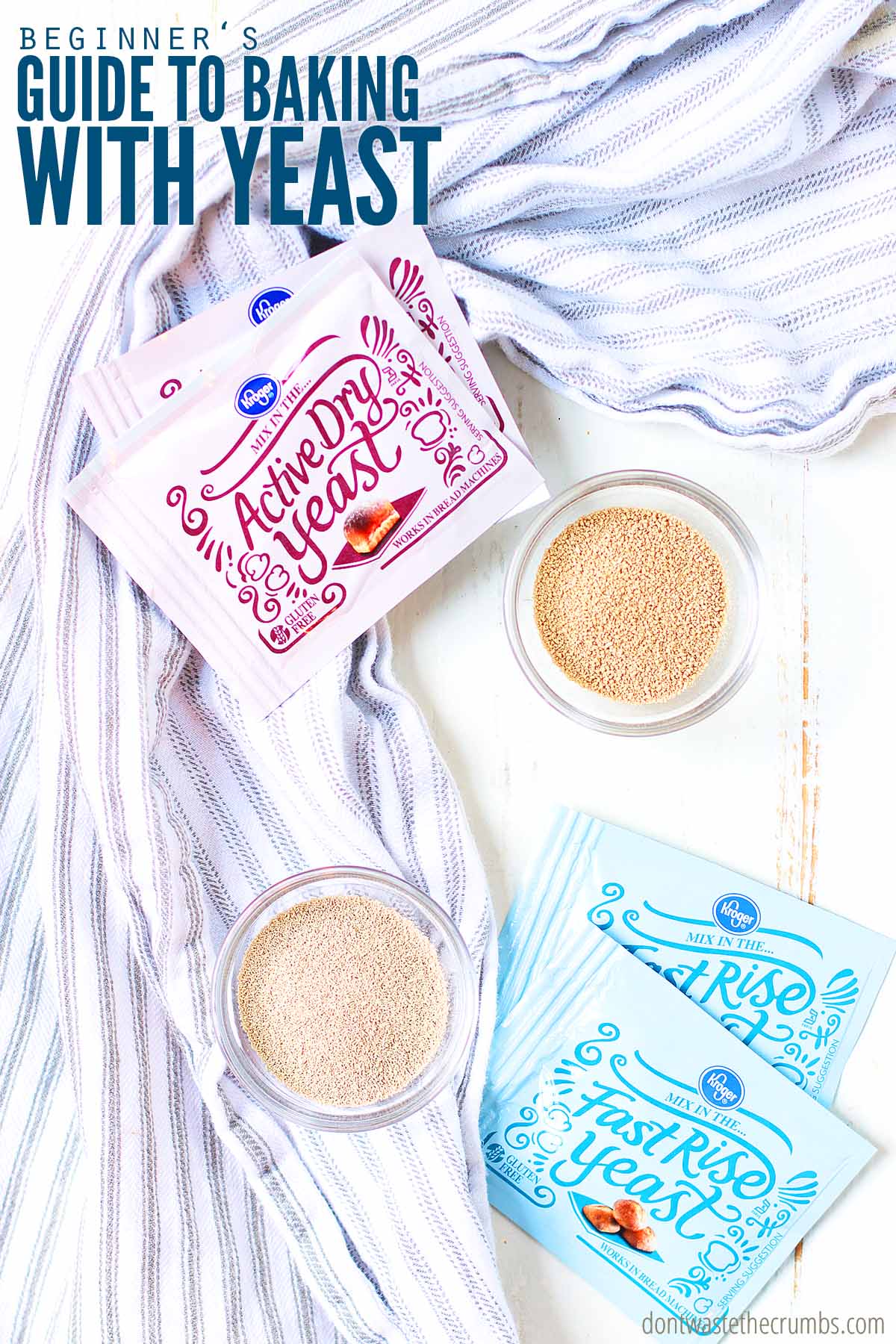
Anytime I ask someone why they don’t bake bread, they usually offer one of two excuses:
- They don’t have enough time.
- They don’t know anything about yeast.
We solved the first issue with No-Knead Overnight Artisan Bread. One of the easiest and most hands-off bread recipes known to man, even the busiest schedule can handle a loaf or two of this crusty artisan bread.
The second issue is just a wee bit more than a dump and mix, but to be honest, yeast really isn’t that difficult to work with.
Once you know a few of the basics, you’ll be well on your way to making fresh bread on a regular basis.
WHAT IS YEAST?
Yeast is a living organism that changes sugar into alcohol and carbon dioxide. Yeast is used to make beer through the fermentation process of converting sugar to alcohol. We bake with yeast to utilize the carbon dioxide, which helps the gluten in the dough stretch and expand to give us the fluffy texture we love in baked goods.
A BEGINNER’S GUIDE TO BAKE WITH YEAST
PROOFING YEAST
Proofing is a method to ensure that yeast is alive and ready to work in the dough. It involves adding the yeast and a bit of sweetener to warm water to activate it.
I almost always proof my yeast to ensure I’m not wasting precious ingredients and even more precious time only to have the recipe NOT turn out because the yeast was dead (I learned that lesson once and have been proofing my yeast ever since!). The only reason I don’t proof yeast occasionally is that I bake with yeast fairly often, so I know my yeast is fresh.
The process of proofing is simple: yeast + warm water + sugar = beer foam bubbles.
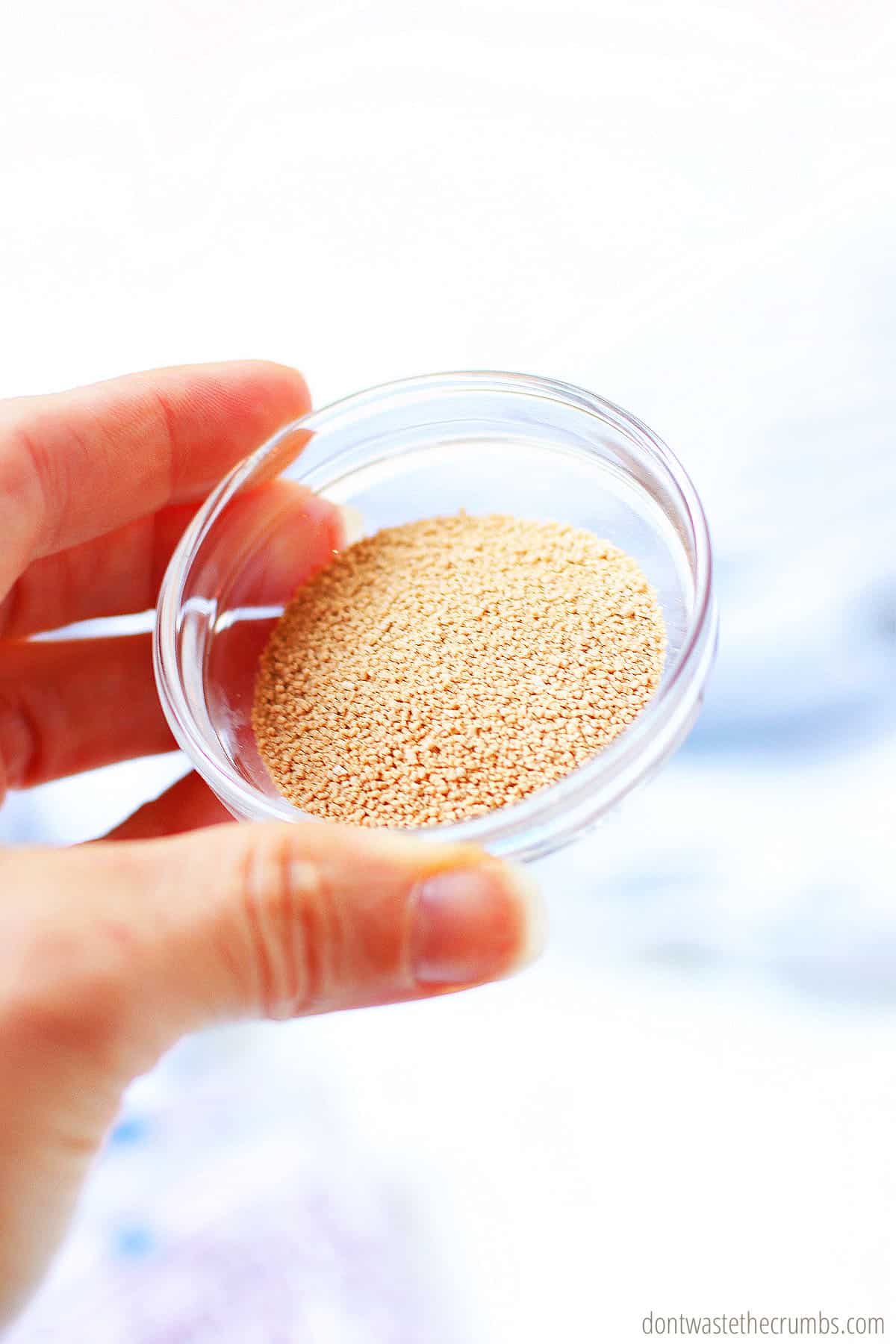
WATER FOR YEAST BAKING
Although seemingly insignificant, let’s talk about the water.
- When proofing yeast, the water temperature needs to be between 105 and 115 F. Any thermometer will do the trick, so long as it can read between these two limits.
- If the water is too cool, the yeast won’t activate. If the water is too hot, you’ll kill the yeast.
- For safety reasons, we have our hot water heater set to just one tick hotter than the recommended setting. I’ve found that turning my sink water on as hot as it will go is the perfect temperature for proofing yeast.
- You CAN use a microwave, but my water always ends up too hot, and then I have to wait what feels like an eternity for it to cool.
Some recipes (like Homemade Hamburger Buns) call for proofing in other liquids like milk, and others in juice (like Light and Fluffy Dinner Rolls), but most recipes call for water.
YEAST EATS SUGAR.
Some recipes call for sugar, some don’t. The yeast feeds on the sugar, and in my personal experience, using some sort of sweetener offers a better result than no sweetener at all.
Stirring the water and sugar together with the yeast seems to help the process develop too (as opposed to just measuring and letting them sit).
- This sweetener does NOT have to be granulated white sugar. You can use honey or maple syrup if you prefer, but when you’re only using a couple of teaspoons that will be spread out over two large loaves of bread, I find it more cost-effective to use typical granulated white sugar.
- The typical ratio of sweetener to bread is 1 teaspoon per 1 loaf. Adding more sweetener or baking fewer loaves out of a batch of yeast dough will cause the flavor of the sweetener itself to show through.
- Most honey whole wheat loaves of bread use ¼ cup of honey or more for flavor. Something to keep in mind when you’re debating whether to use maple syrup in pizza crust dough.
BEER FOAM BUBBLES ARE YOUR FRIEND.
I use this phrase because that’s the type of bubbles you’re looking for. Not soap bubbles, not the bubbles you get from kid’s toys – beer foam bubbles.
It can take anywhere from 5 to 10 minutes for bubbles to appear, but the key is that you see a definite layer of foamy bubbles on top of your yeast and water mixture.
No bubbles mean dead yeast, so there’s no point in continuing because your recipe will more than likely not turn out. Beer foam bubbles are the green light to proceed.
TYPES OF BAKING YEAST
There are two types of yeast – baker’s yeast and brewer’s yeast. Brewer’s yeast is mostly used in making beer, while the different types of baker’s yeast are used to produce various baked goods.
1. ACTIVE DRY YEAST
This is what most bakers use traditionally. They’re granular, range in color from light to dark brown, and give two rises in recipes. Active dry yeast should be proofed before use in recipes.
2. INSTANT YEAST
Also known as bread machine yeast, rapid-rise yeast, or quick-rise yeast, this type of yeast was designed so that it could be added directly to the dry ingredients without having to go through proofing first. You CAN prove instant yeast, but you don’t have to.
3. FAST-RISE YEAST
This yeast is instant yeast with added dough conditioners, typically citric acid (Hodgson Mill adds vitamin C). The added ingredients help the yeast work more quickly. Fast-rise yeast is best in recipes that only call for one rise.
Proofing is not required for fast-rise yeast, although it can be done without issue if you’re unsure you have fresh yeast.
Tip: Even newly opened packages can contain dead yeast. From one frugal baker to another, always proof your yeast.
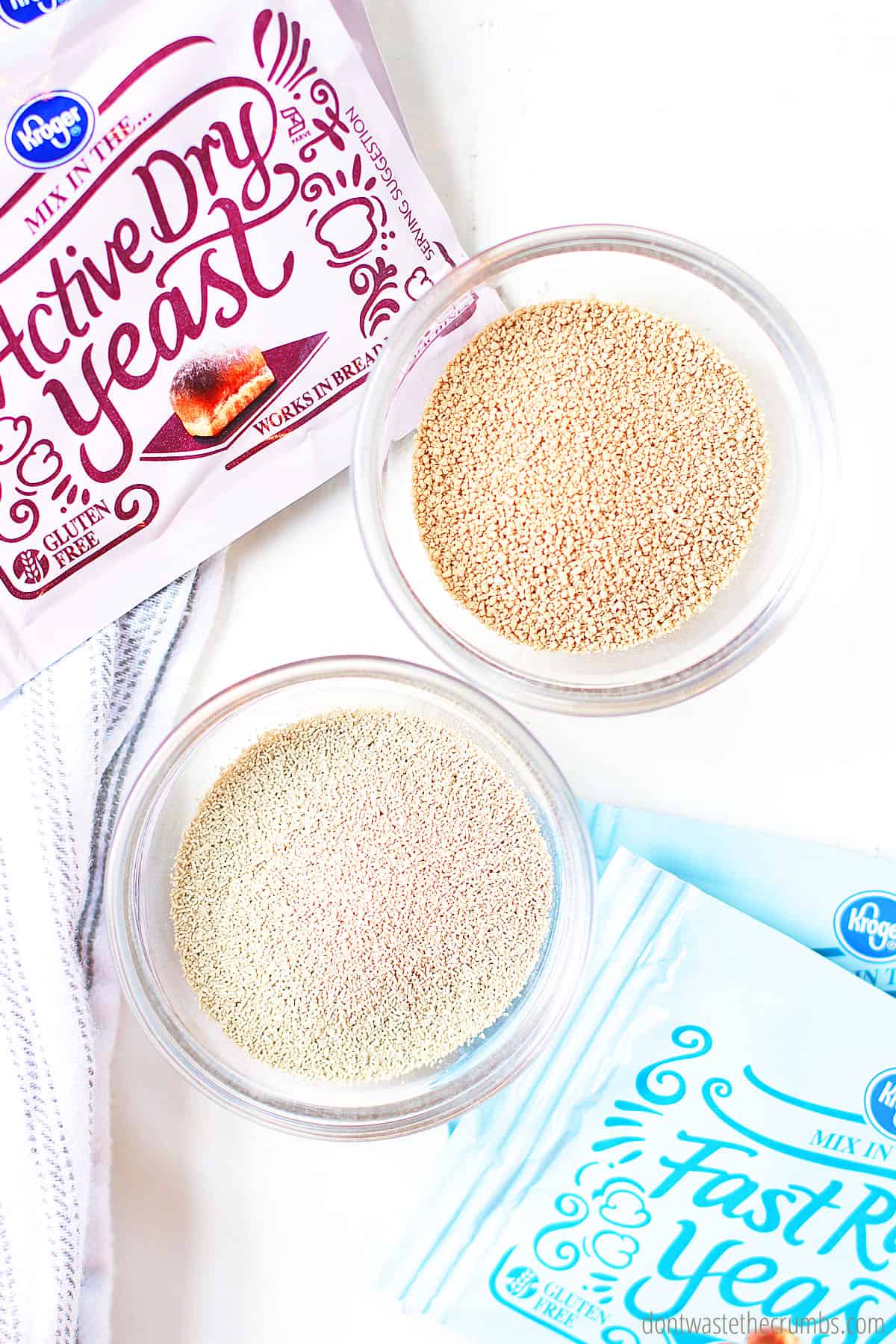
BUYING BAKING YEAST
Be sure to read the weight before you open a new package of baking yeast and dump it into your bowl.
- Most baking recipes call for 2 ¼ teaspoons of yeast, and that’s why so many individual packets come with just ¼ oz (the equivalent of 2 ¼ teaspoons).
- Some individual packets can have up to 5/16 oz (approximately 3 ⅛ tsp).
- However, in most cases, adding more yeast to a recipe won’t hurt it, and will actually help the rise a bit more.
In fact, recipes like Overnight Artisan Bread benefit from adding more yeast, for both flavor and rise! You could use just 1 teaspoon of yeast and the bread will still rise, but the extra yeast adds flavor that I thought tasted too good to leave out!
Buying in bulk is something worth considering if you bake with yeast often.
- You’ll find recipes that use just ½ teaspoon and some that use up to 3 teaspoons.
- Being able to measure from a larger container, like a glass jar, is much easier than opening several packets and then finding a creative way to store them.
Tip: If buying yeast in bulk isn’t an option in your area, consider opening up the individual packets and pouring them into a glass jar. You’ll get the same benefits as measuring from bulk, without yeast spilling all over the fridge!
STORING YEAST FOR BAKING
Yeast for baking performs best when it’s kept away from air, moisture, and warmth. Room temperature is best when you’re ready to bake with yeast.
- Unopened yeast can be stored in a cupboard away from heat sources like the refrigerator or oven.
- Open yeast should be stored in the refrigerator to help keep it fresh for longer.
- When we buy yeast in bulk, I pour some into a glass jar and store the jar in the refrigerator.
- I keep the rest of the bulk yeast in a freezer-safe bag, remove excess air, and store it in the freezer. Some manufacturers don’t recommend the freezer, but I’ve been doing this for over two years and haven’t had any issues so far.
- Keep in mind shelf life. If you do buy in bulk, keep in mind the shelf life. Most yeast will keep fresh for 4-6 months in the refrigerator once opened.
YEAST IN BAKING FAQS
What is the difference between instant yeast and active yeast in baking?
Active dry yeast needs to be activated before use. Instant yeast is ready to be used once you open the package or jar. Both kinds can be used interchangeably in most recipes, but baked goods made with instant yeast will have a quicker rise time.
What is 1 package of active dry yeast equivalent to?
1 package of active dry yeast is equivalent to 2 ¼ teaspoons.
What is the ratio of instant yeast to flour?
When you are using one packet of yeast, you will need to use about 4 cups of flour. If you’re not sure about the ratios, I recommend following a recipe like this Easy White Sandwich Bread until you get used to the feel of yeast bread dough.
What can you make with yeast besides bread?
While bread is the most common food to bake with yeast, you can also make yummy things like Pizza Dough and Cinnamon Rolls.
MY NUMBER ONE TIP TO BAKE WITH YEAST
There’s only one surefire way to get to know how to bake with yeast: use it!
- Pick a type of yeast (I recommend active dry yeast), start using it, and watch it in action. See how it foams up. See what happens when you use honey instead of sugar. Watch the first rise of yeasted bread dough, and then watch the second rise.
- Tinker with simple recipes and double the yeast – or even triple it!
- Yeast is incredibly affordable – regularly priced at just 10¢ per teaspoon, or as little as 2¢ when bought in bulk – so it’s no skin off your back to proof it and see if it works.
- To experiment with yeast even further, you can try capturing wild yeast from the air and make your own sourdough bread starter.
Still have bread-baking questions? Check out my Ultimate Troubleshooting Guide for Baking Bread! There you’ll find answers for issues that may arise at every step of the process.
MORE RECIPES TO BAKE WITH YEAST
- 90 Minute Man Bread
- The Best White Sandwich Bread
- Pizza Dough
- Homemade Beer Bread
- Ultimate Guide to Freezing Bread
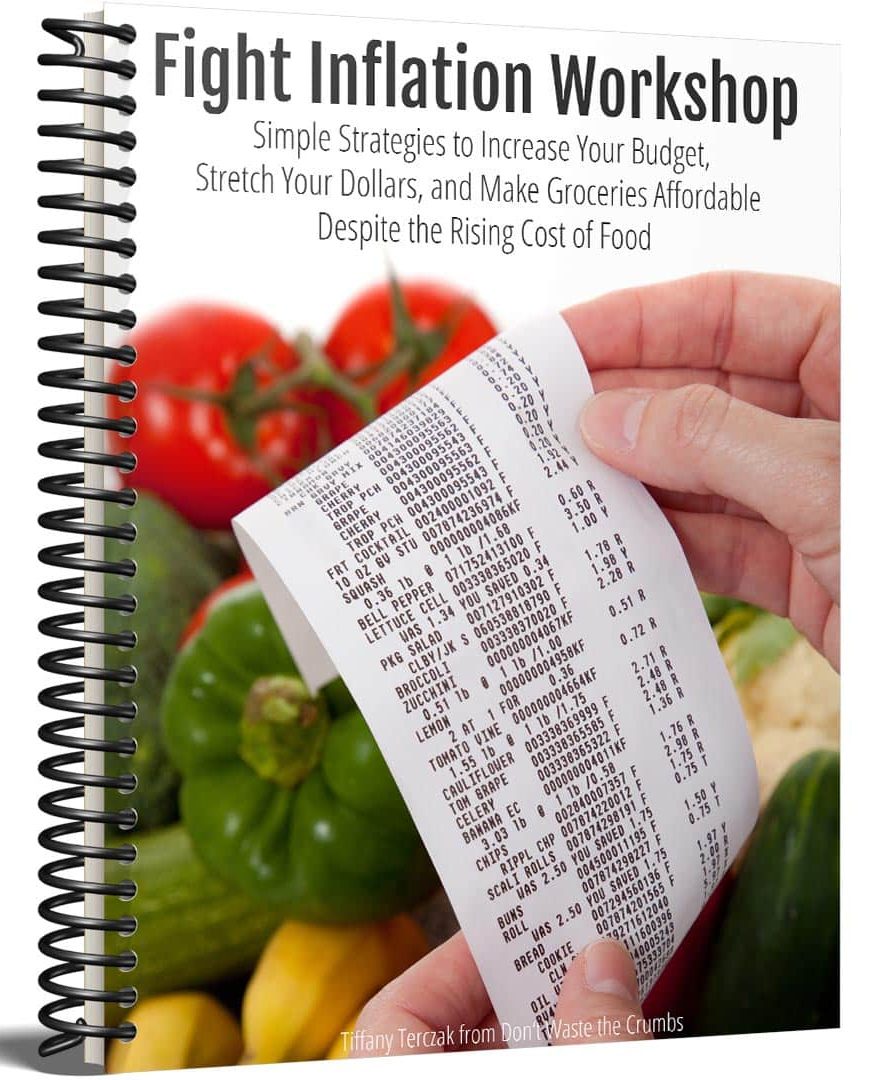

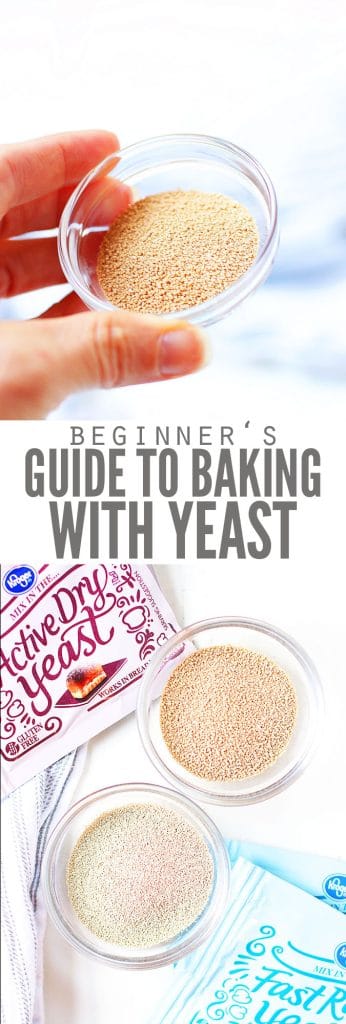
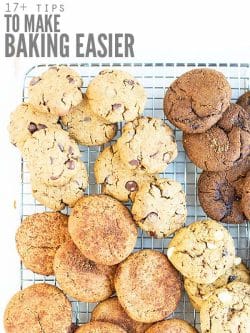
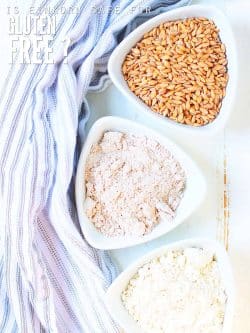
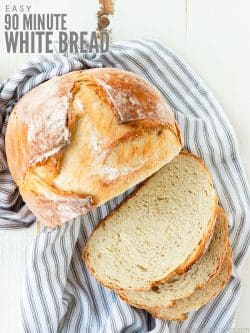
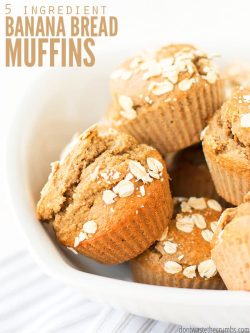

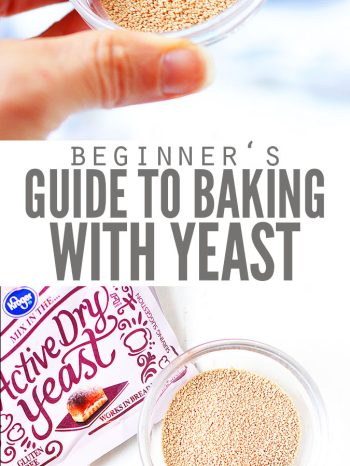
Once the yeast has been proofed/bloomed can you save/store it for future use if I made too much?
I don’t believe you can save it, Pash.
I shopped for essentials before we were told to stay in place because of the Covid-19 virus. I bought Instant Yeast rather than Active Yeast thinking I might have to make bread if we were isolated for long. It has now come to that. I haven’t made bread in forever so I am wondering if I can use Instant Yeast rather than active in some of the bread recipes. I am thinking of making the Man Bread since it sounds rather easy.
How do I use Instant Yeast instead of Active Yeast. Thanks
Hi Susan! Instant yeast typically doesn’t require as long as a rise time as active yeast, so you’ll want to make two changes to recipes: 1) always bloom your yeast first, to make sure it’s good (you’ll want to see “beer foam bubbles” when you combine warm (not hot!) water + sugar + yeast in your bowl. 2) watch for the “double in size.” This may happen sooner with instant yeast!
For instant yeast, When you say to store it on the freezer, it means to have the yeast frozen or in the fridge just to keep it cold? Does it need to thaw before using it?
No need to thaw! The yeast won’t actually “freeze,” but keeping it in a cold environment will help keep it fresh, longer. The fridge can work too, if you go through it in about 2-3 months. If it will take you longer, I’d recommend freezing for longer-term storage.
if u put the yeast sugar and water in a bowl at the beginning of a recipe is that considered a proof? im trying to make donuts and every recipe ive seen wants me to combine all the ingredients, proof, shape my donuts, proof, than fry. should i leave out the water sugar proof if im doin 2 proofs ? or am i just activating the yeast than proofing twice?…. I know this is an older post and im late but i havent seen any other posts from any other pages dedicated to this subject
Yeast, warm water (not hot!) and sugar is considered proofing the yeast. When it looks like beer foam, that means it’s bloomed. If the recipe calls for a second proof, then it’s talking about rise. So proof the yeast first to get bubbles, then every time you see “proof” in the recipe, think “rise.” 🙂
I have a Keto bread recipe that uses 2 tsp honey to 2 of yeast, as I’m on a sugar free diet, how much of this sugar gets eaten by the yeast?? I leave it the full 10 minutes to prove. Its the only Keto bread that I like.
Cheers
Chris
I’m sorry Christine, I have no experience with the keto diet and couldn’t tell you exactly how much sugar is eaten by the yeast.
Christine,
Check out Deidre’s Bread on YouTube or Google it. Her bread is delicious and she says it’s only 2 net carbs and that the yeast (1 tsp) is eaten by the honey (1 tsp). She only has a couple of videos. One is using the Zojirushi Bread Machine and the other is using a Kitchen Aid and baking in the oven. She adds the yeast (instant) last with the honey. Ingredients include Flax Seed Meal, Oak fiber, and Vital Wheat gluten, etc..
Tiffany,
This is a great article and I appreciate your providing so that I could learn more on the subject. Thank you.
Gloria,
You’re so welcome! 🙂
Minor correction un Deidre’s recipe: It’s 1 Tablespoon of yeast to 1 teaspoon of honey. The bread is fantastic and truly low carb.
I am new to baking, specifically GF. I can’t find an answer to this: To proof the yeast, should i sprinkle it on top of the water or mix it in?
Either or Terra, but I personally mix it so the yeast actually dissolves and comes in contact with the sugar.
I am making cinnamon rolls using my challah recipe and was trying to figure out how to freeze them. Do I make them and let them rise then freeze? When I do freeze then would I take them out the night before and let them proof in fridge? Then rise in morning and bake? I am making a lot of them daily and just thought it might be easier to freeze to say one day ahead since my dough rises overnight in fridge.
Thanks for any tips!!
Hi Darlene! This post on freezing bread should help: https://dontwastethecrumbs.com/2015/02/ultimate-guide-freezing-bread-dough-baked-goods/
When I’m proofing to make sure it’s not dead. Do I need to use a different packet of yeast for recipe? Sorry never had any luck in making yeast rolls. But I’ve made it my mission to learn! Lol any help would be appreciated.
Hi Lisa! The yeast you proof will be the yeast you use in the recipe. Most bread recipes will include proofing (warm water + sugar + yeast) in the first step or so. If they don’t, you can pull out liquid from the recipe (1/4 cup or so), the yeast and a pinch or two of sugar and proof it yourself before continuing. 🙂 Good luck – you can do this!
I always use my bread machine. It says to add all the liquids first, then the dry ingredients and then put the dry yeast on the very top. IF I was to proof the yeast it would then be liquid… So WHEN would I add it to the bread machine? First with the liquids? Or dump it on top of the dry ingredients? I’m confused.
Thanks.
Thanks. I’ve always wondered about the different types of yeast! great information.
I have always used active dry yeast, like you. But I use it for making the dough in the bread machine and also for some breads that I do myself. Do you think that’s not the best way? What would you recommend for the dough in the bread machine? I’ve never proofed mine before (unless the recipe has called for it to sit…).
When you store the yeast in the refrigerator do you need to let it come to room temperature before you proof it?
I’ve read that it’s supposed to come to room temperature first, but I don’t do that and haven’t had any issues. 🙂
Hi Tiffany: what would you use as a ratio with sugar and water when proofing one packet (1/4 oz) of yeast? Thanks!
Hi Katya! I like using a 1-1 ratio in my recipes, but you could use half the sugar as yeast (1/4 oz = 2 1/4 tsp so 1 heaping tsp sugar) as well. As a general rule of thumb, I use more sugar with one rise (1-1 ratio for pizza dough, as an example) and less sugar with two rises (2-1 ratio for sandwich bread) since the yeast has more time to develop with the second rise than it does with just one. 🙂
Thanks so much for the info! I just started working with yeast and your post was very helpful.
You’re most welcome Katya!!
Best tips I received from a friend of mine who does baking all the time were: purchase the glass jars of yeast (instead of the packets), store it in the freezer, and in order to get the right temp–use your fingers to get it “warm-to-touch”, which should be about the temp it needs to be. Have never had an issue with yeast since she told me those things 🙂 There’s not much that beats homemade bread! 😉
Great tip Natalie! Thanks for sharing!!
Tiffany…
Timely post. Like you wouldn’t believe.
THANK YOU!!!!!!!!!!!
I don’t do bread.
Baking it myself, that is.
Now I might actually have the courage to try.
Funny how things work out that way Veronika! So glad this helps you – yeast isn’t as big of a deal as our brains (or at least mine for sure) make it out to be. 😉 Good luck!!!!